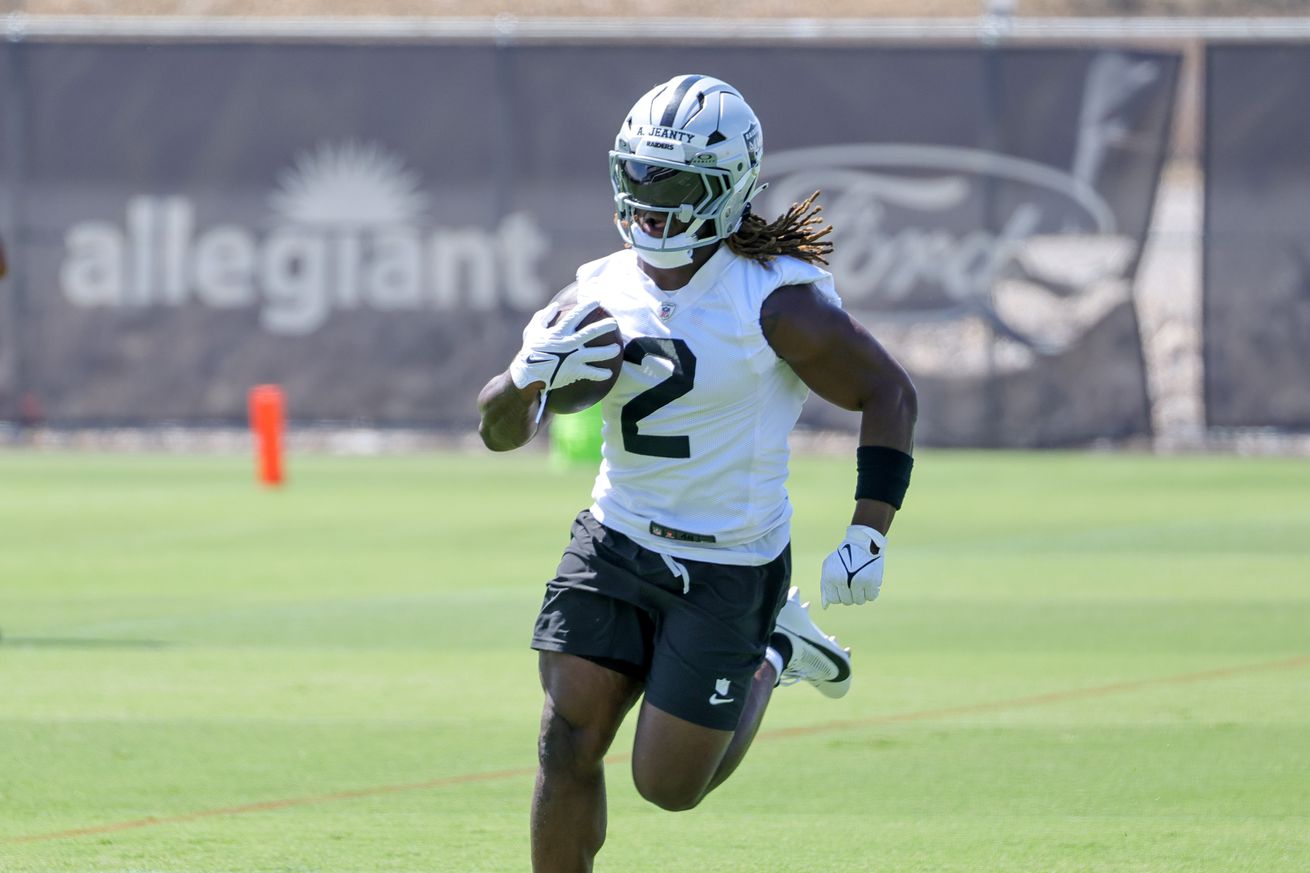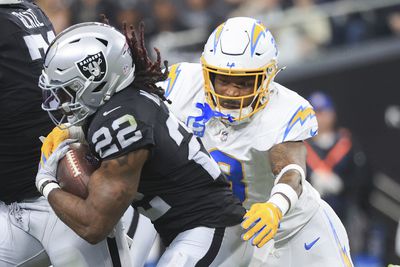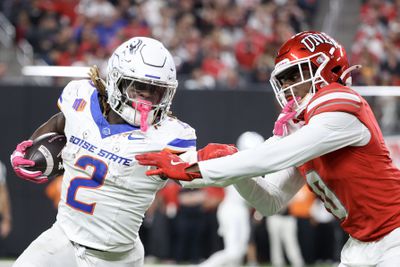
Boise State product has chance to improve league’s worst rushing attack from last season
It’s no secret that the Las Vegas Raiders’ rushing attack and offense as a whole were terrible last year. The Raiders ranked 29th in points scored, and finishing dead last in rushing yards and yards per carry as a team were big factors. Hence why Las Vegas used the No. 6 overall pick of last April’s NFL draft on Boise State running back Ashton Jeanty.
Despite recent analytics suggesting that the draft slot is typically too high for a running back, the Silver and Black’s selection of Jeanty has been applauded by many in the media, including some of the biggest number crunchers in the industry.
For example, FTN’s Football Almanac 2025 dives into how much of an upgrade the Heisman Trophy runner-up will be compared to what Las Vegas had in the backfield last season.
“The Raiders had one of the worst collections of running backs in the league last year,” FTN’s Alex Blickle wrote, “so not only is sixth overall pick Ashton Jeanty potentially one of the few backs in the league who can make a significant impact, but he’s also replacing well-below-average players.”
Blickle goes on to cite two statistics where the team’s rushers were especially egregious: DVOA and breaking tackles.
For a refresher, the creator of DVOA, Aaron Schatz, offers a high-level explanation of the metric as “a team’s efficiency by comparing success on every single play to a league average based on situation and opponent,” and a more thorough description can be found via this link.
How bad were the Raiders in this area last year? Well, Blickle noted, “Las Vegas was at the bottom of the league with just 3.0 yards per carry and -70.6% DVOA when running on second-and-long.”
Diving deeper into the numbers provided by the Almanac, Alexander Mattison led the team in carries with 132, but averaged 3.2 ypc and recorded -24.4% DVOA. Ameer Abdullah was next with 66 touches, 4.7 ypc and -2.6% DVOA, and Zamir White had 65 rushes, 2.8 ypc and -62.0% DVOA.

Photo by Ian Maule/Getty Images
Sincere McCormick was the most efficient running back with 39 rushes, 4.7 ypc and 18.0% DVOA. The problem was that McCormick didn’t get a carry until Week 12 and then suffered a season-ending injury just three games later.
The only other players from last year’s team to record a positive DVOA when running the ball were wide receivers Tre Tucker (nine, 4.9 and 59.5%) and D.J. Turner (five, 6.6 and 96.6%).
Tucker returns this season and is expected to have a bigger role on the team, but primarily in the passing game. Meanwhile, Turner is still unsigned after the Raiders chose not to extend a tender to him as a restricted free agent this offseason.
Unfortunately, DVOA is only available for the NFL and doesn’t extend to College Football, so there’s no way to compare Jeanty’s production for that metric. But he did manage to average an impressive 7.0 ypc, which ranked second among Mountain West running backs with at least 100 rushing attempts.
Granted, one of the knocks on the Boise State product is that he didn’t face stiff competition in conference play. However, he ran the ball nearly 100 times more than anyone else in the MWC, which, in theory, should bring down his efficiency toting the rock.
New Mexico’s Eli Sanders was the only MWC back to record triple-digit carries and have a higher ypc than Jeanty, but Sanders only beat out Jeanty by 0.2 ypc despite having 227 fewer rushing attempts. For good measure, Nevada’s Savion Red finished in third place with 5.8 ypc and only had 119 attempts to Jeanty’s 374.

Photo by Ian Maule/Getty Images
Also, Sanders faced just one Power Four team last year—a Week 2 matchup against a 4-8 Arizona squad where he posted a season-low 1.8 ypc—and Red didn’t face any schools from the major conferences. Meanwhile, Jeanty had 7.7 ypc against Oregon, who went on to earn the No. 1 seed in the playoffs, and 3.5 ypc in a quarterfinal matchup against Penn State.
In other words, given the volume of touches, the No. 6 overall pick’s efficiency was in a class of its own, even when compared against running backs who also faced low-level college football competition.
Circling back to FTN’s Almanac, Blickle also noted how poor the Raiders’ rushers were at making defenders miss in recent years. “Las Vegas was once again near the bottom of the league in broken tackles: 30th in broken tackle rate after ranking 31st in 2023,” he wrote.
Pro Football Focus backs that up as Mattison led the team with 14 missed tackles forced when running the ball, tied for 49th among NFL running backs while ranking 36th with his 132 rushing attempts. For those curious, Abdullah was tied for 54th with 13 MTF and McCormick was 70th with eight.
The good news for the Raiders moving forward is that breaking tackles is one of Jeanty’s biggest strengths. He famously led the country with 152 MTFs, 49 more than anyone else, per PFF. To be fair, he also had 81 more rushing attempts than any other running back.
However, among backs with at least 75 rushes, the former Bronco still topped the charts efficiency-wise with about 0.41 MTF per carry. That also negates the level of competition factor since he, obviously, led all Mountain West running backs in both volume and average for the metric.
Of course, college production doesn’t always translate to the NFL, as that’s a concern with every rookie. But with Jeanty now in Las Vegas’ backfield, the Raiders’ rushing attack this season projects to get a major facelift from the league’s worst unit a year ago.
For anyone interested in diving deeper into the FTN Football Almanac 2025, follow this link to purchase a copy.